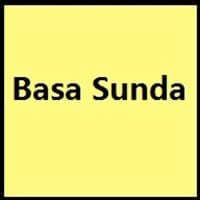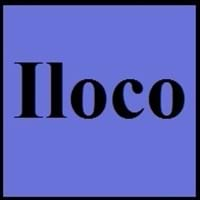Sundanese and Ilocano
Countries
West Java
Philippines
National Language
Indonesia
Philippines
Second Language
Not spoken in any of the countries
Not spoken in any of the countries
Speaking Continents
Asia
Asia
Minority Language
Not spoken in any of the countries
Not spoken in any of the countries
Regulated By
Not Available
Commission on the Filipino Language
Interesting Facts
- The Sundanese language is second most widely spoken regional language in Indonesia.
- Ilocano was originally written with Baybayin syllabary, then gradually it was replaced by Latin alphabet.
- Northwest Luzon is the original Ilocano homeland.
Similar To
Madurese and Malay Languages
Tagalog, Indonesian and Malaysian Languages
Derived From
Not Available
Not Available
Alphabets in
Sundanese-Alphabets.jpg#200
Ilocano-Alphabets.jpg#200
Scripts
Latin, Sundanese
Ilokano Braille, Latin
Writing Direction
Left-To-Right, Horizontal
Not Available
Language Levels
Not Available
Thank You
Nuhun
Agyamanak
How Are You?
Kumaha kabarna?
Kumusta?
Good Night
Wilujeng kulem
Naimbag a rabii
Good Evening
Wilujeng wengi
Naimbag a sardam
Good Afternoon
Wilujeng siang
Naimbag a malem
Good Morning
Wilujeng énjing
Naimbag a bigat
Please
Mangga
Not available
Sorry
Hapunten
Agpakawanak
Bye
Wilujeng angkat
Pakada
I Love You
Abdi bogoh ka anjeun
Ayayatenka
Excuse Me
Punten
Maawan-dayawen
Dialect 1
Western dialect
Balangao
Where They Speak
Banten
Philippines
How Many People Speak
Not Available
Dialect 2
Northern dialect
Bontoc
Where They Speak
Bogor
Philippines
How Many People Speak
Not Available
Dialect 3
Priangan dialect
Not present
Where They Speak
Bandung
Not present
Native Name
Not Available
ilokano
Alternative Names
Priangan, Sunda
Ilokano, Iloko
French Name
soundanais
ilocano
German Name
Sundanesisch
Ilokano-Sprache
Pronunciation
Not Available
Not Available
Ethnicity
Sundanese, Bantenese, Cirebonese, Badui
Ilocano people
Origin
5th century AD
18th Century
Language Family
Austronesian Family
Austronesian Family
Subgroup
Indonesian
Not Available
Branch
Not Available
Not Available
Early Forms
No early forms
No early forms
Standard Forms
Sundanese
Modern Ilocano
Language Position
Not Available
Signed Forms
Not Available
Not Available
Scope
Individual
Individual
ISO 639 1
su
No data available
ISO 639 6
Not Available
Not Available
Glottocode
sund1251
ilok1237
Linguasphere
No data available
31-CBA-a
Language Type
Living
Living
Language Linguistic Typology
Subject-Verb-Object
Not Available
Language Morphological Typology
Not Available
Not Available
All Sundanese and Ilocano Dialects
Most languages have dialects where each dialect differ from other dialect with respect to grammar and vocabulary. Here you will get to know all Sundanese and Ilocano dialects. Various dialects of Sundanese and Ilocano language differ in their pronunciations and words. Dialects of Sundanese are spoken in different Sundanese Speaking Countries whereas Ilocano Dialects are spoken in different Ilocano speaking countries. Also the number of people speaking Sundanese vs Ilocano Dialects varies from few thousands to many millions. Some of the Sundanese dialects include: Western dialect, Northern dialect. Ilocano dialects include: Balangao , Bontoc. Also learn about dialects in South American Languages and North American Languages.
Sundanese and Ilocano Speaking population
Sundanese and Ilocano speaking population is one of the factors based on which Sundanese and Ilocano languages can be compared. The total count of Sundanese and Ilocano Speaking population in percentage is also given. The percentage of people speaking Sundanese language is 0.57 % whereas the percentage of people speaking Ilocano language is 0.14 %. When we compare the speaking population of any two languages we get to know which of two languages is more popular. Find more details about how many people speak Sundanese and Ilocano on Sundanese vs Ilocano where you will get native speakers, speaking population in percentage and native names.
Sundanese and Ilocano Language Codes
Sundanese and Ilocano language codes are used in those applications where using language names are tedious. Sundanese and Ilocano Language Codes include all the international language codes, glottocodes and linguasphere.





